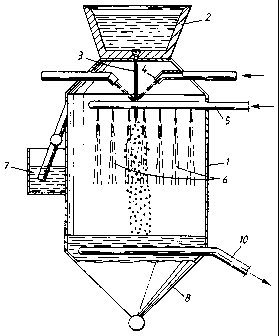Some of the information on this Web page has been provided by external sources. The Government of Canada is not responsible for the accuracy, reliability or currency of the information supplied by external sources. Users wishing to rely upon this information should consult directly with the source of the information. Content provided by external sources is not subject to official languages, privacy and accessibility requirements.
Any discrepancies in the text and image of the Claims and Abstract are due to differing posting times. Text of the Claims and Abstract are posted:
| (12) Patent: | (11) CA 2251751 |
|---|---|
| (54) English Title: | A PROCESS AND PLANT FOR PRODUCING ATOMIZED METAL POWDER, METAL POWDER AND THE USE OF THE METAL POWDER |
| (54) French Title: | PROCEDE ET INSTALLATION DE PRODUCTION DE POUDRE DE METAL ATOMISE, POUDRE AINSI PRODUITE, ET SON UTILISATION |
| Status: | Expired and beyond the Period of Reversal |
| (51) International Patent Classification (IPC): |
|
|---|---|
| (72) Inventors : |
|
| (73) Owners : |
|
| (71) Applicants : |
|
| (74) Agent: | GOWLING WLG (CANADA) LLP |
| (74) Associate agent: | |
| (45) Issued: | 2010-07-06 |
| (86) PCT Filing Date: | 1997-04-18 |
| (87) Open to Public Inspection: | 1997-11-13 |
| Examination requested: | 2002-03-08 |
| Availability of licence: | N/A |
| Dedicated to the Public: | N/A |
| (25) Language of filing: | English |
| Patent Cooperation Treaty (PCT): | Yes |
|---|---|
| (86) PCT Filing Number: | PCT/SE1997/000656 |
| (87) International Publication Number: | SE1997000656 |
| (85) National Entry: | 1998-10-15 |
| (30) Application Priority Data: | ||||||
|---|---|---|---|---|---|---|
|
The present invention relates to a process for manufacturing atomized metal
powder in an atomization plant comprising a casting box, a reactor vessel, a
powder container and sedimentation equipment. The production process takes
place with controlled thermal balance. The invention also relates to an
atomization plant, atomized metal powder and the use of the metal powder as
coolant in the manufacture of steel.
L'invention porte sur un procédé de production de poudre de métal atomisé comportant une poche de coulée, un réacteur, un bac à poudre et un équipement de sédimentation. Le processus de production s'effectue sous équilibre thermique régulé. L'invention porte également sur une installation d'atomisation, sur la poudre de métal atomisé, et sur l'utilisation de ladite poudre comme agent réfrigérant dans la fabrication d'acier.
Note: Claims are shown in the official language in which they were submitted.
Note: Descriptions are shown in the official language in which they were submitted.

2024-08-01:As part of the Next Generation Patents (NGP) transition, the Canadian Patents Database (CPD) now contains a more detailed Event History, which replicates the Event Log of our new back-office solution.
Please note that "Inactive:" events refers to events no longer in use in our new back-office solution.
For a clearer understanding of the status of the application/patent presented on this page, the site Disclaimer , as well as the definitions for Patent , Event History , Maintenance Fee and Payment History should be consulted.
| Description | Date |
|---|---|
| Time Limit for Reversal Expired | 2014-04-22 |
| Letter Sent | 2013-04-18 |
| Grant by Issuance | 2010-07-06 |
| Inactive: Cover page published | 2010-07-05 |
| Inactive: Final fee received | 2010-02-01 |
| Pre-grant | 2010-02-01 |
| Notice of Allowance is Issued | 2009-09-14 |
| Letter Sent | 2009-09-14 |
| Notice of Allowance is Issued | 2009-09-14 |
| Inactive: Approved for allowance (AFA) | 2009-09-09 |
| Amendment Received - Voluntary Amendment | 2009-01-27 |
| Inactive: S.30(2) Rules - Examiner requisition | 2008-09-16 |
| Letter Sent | 2008-06-19 |
| Reinstatement Requirements Deemed Compliant for All Abandonment Reasons | 2008-06-02 |
| Deemed Abandoned - Failure to Respond to Maintenance Fee Notice | 2008-04-18 |
| Inactive: Office letter | 2006-06-01 |
| Inactive: MF/reinstatement fee unallocated - Log 25 deleted | 2006-05-31 |
| Inactive: Entity size changed | 2006-05-16 |
| Letter Sent | 2006-05-15 |
| Inactive: Corrective payment - s.78.6 Act | 2006-05-04 |
| Reinstatement Requirements Deemed Compliant for All Abandonment Reasons | 2006-05-03 |
| Deemed Abandoned - Failure to Respond to Maintenance Fee Notice | 2006-04-18 |
| Amendment Received - Voluntary Amendment | 2005-07-08 |
| Inactive: S.30(2) Rules - Examiner requisition | 2005-01-13 |
| Amendment Received - Voluntary Amendment | 2004-07-07 |
| Inactive: S.30(2) Rules - Examiner requisition | 2004-01-07 |
| Letter Sent | 2002-04-09 |
| All Requirements for Examination Determined Compliant | 2002-03-08 |
| Request for Examination Requirements Determined Compliant | 2002-03-08 |
| Request for Examination Received | 2002-03-08 |
| Inactive: IPC assigned | 1998-12-30 |
| Classification Modified | 1998-12-30 |
| Inactive: First IPC assigned | 1998-12-30 |
| Inactive: Notice - National entry - No RFE | 1998-12-09 |
| Application Received - PCT | 1998-12-04 |
| Application Published (Open to Public Inspection) | 1997-11-13 |
| Abandonment Date | Reason | Reinstatement Date |
|---|---|---|
| 2008-04-18 | ||
| 2006-04-18 |
The last payment was received on 2010-04-12
Note : If the full payment has not been received on or before the date indicated, a further fee may be required which may be one of the following
Patent fees are adjusted on the 1st of January every year. The amounts above are the current amounts if received by December 31 of the current year.
Please refer to the CIPO
Patent Fees
web page to see all current fee amounts.
Note: Records showing the ownership history in alphabetical order.
| Current Owners on Record |
|---|
| RUTGER LARSSON KONSULT AB |
| Past Owners on Record |
|---|
| ERIK AXMIN |
| RUTGER LARSSON |